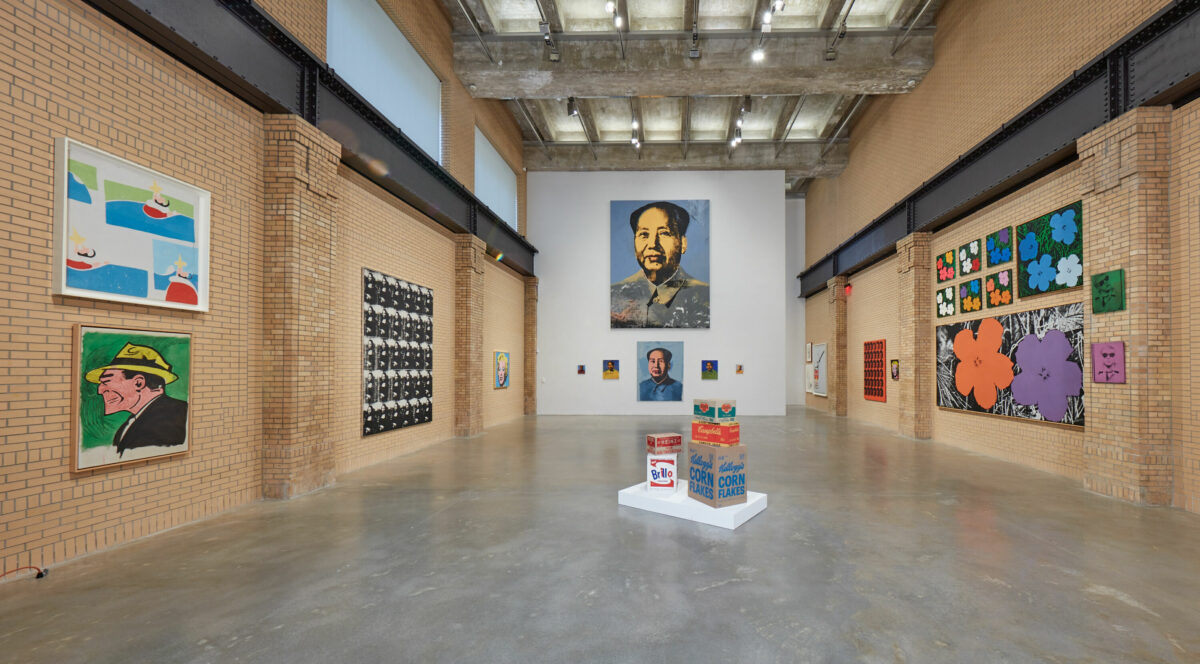By Reagan Carraway
Revolver Gallery owner Ron Rivlin called the NYC show “Warhol’s greatest hits,” praising Brant’s latest exhibit as the best Warhol showcase we’ve ever seen.
The Brant Foundation is reigniting Andy Warhol’s brilliance with a new exhibition, running until July 30th, and curated by its very own founder Peter Brant. In the realm of modern art, few collectors possess the refined eye and profound appreciation for the works of Andy Warhol as Mr. Brant. His latest venture, titled Thirty Are Better Than One, showcases the sheer magnificence of Warhol’s artistic prowess from the beginning of his career, til untimely end.
Set against the backdrop of the Brant Foundation’s New York City exhibition space, 30 are Better Than 1 nods to Warhol’s 1963 work of the same name, depicting… well, 30 Mona Lisas. The titular piece embraces the power of quantity and echoes Warhol’s intimate relationship with commercial allure. This sentiment is on full display with over 100 works by Andy Warhol, all but one belonging to Brant (a gargantuan Mao that Brant donated to the Met Museum in 1977).
Brant’s involvement in the art scene began when he was the young prince to the now-dissipated White Birch Paper Company and collecting artworks like baseball cards. In 1967, Brant and Warhol met and began a relationship that would extend into the present day, many years after Warhol’s death. Brant’s investment in the world of Andy Warhol goes far past his role as a collector. Even in early years, Brant’s earnest commitment to preserving Warhol’s legacy has seen him immerse himself in the artist and cinema maker’s realm, producing Warhol’s L’amour in 1973 and Bad in 1977 with the help of his paper-forged fortune. Brant also played roles in the production of Basquiat (1996), Andy Warhol: A Documentary (2006), and the beloved Interview magazine as an early investor and long-standing publisher. This multifaceted engagement with Warhol’s work enriches Brant’s curatorial approach, as he infuses the exhibition with a deep understanding of Warhol’s artistic evolution.
The showcase chronologizes Warhol’s eras, starting with his earliest artistic endeavors. Featured from one of his first professional collaborations is Pin the Tail on the Donkey, crafted by Warhol during his time as a commercial illustrator at Tiffany & Co. (who generously sponsored the exhibition). This intriguing connection between Warhol’s playful creation and his association with Tiffany & Co. adds a captivating layer to the display, intertwining pop culture icons, Warhol’s formative works, and the support of the renowned jewelry and luxury goods brand. From subsequent eras, many “well-knowns” are included such as Elvis Presley (Gold Boot) (1956) and Licorice Marilyn (1962). Among all of the works, crowning jewels of the exhibit are Brant’s first Warhol acquisition Campbell’s Soup Can (Chicken and Rice) (1962) and White Disaster (1963). White Disaster sold for 84.5 million dollars in 2022, making it one of Warhol’s highest dollar pieces and was bought by an anonymous buyer that was very recently revealed to have been Brant. A fitting close to the exhibition and Warhol’s career, The Last Supper (1986) also looms large and beautiful, an homage to Leonardo DaVinci’s work and a palpable presence of memento mori, a subject visited many times in Warhol’s more visceral works.
From unraveling death and disaster to blurring art and commerce, Warhol’s indelible mark on the art world reverberates with unyielding relevance. Thirty Are Better Than One hits all the right notes, achieving a resounding Grammy-worthy performance. It’s a harmonious masterpiece that strikes a chord with art enthusiasts, captivating them from the first beat to the grand finale.





